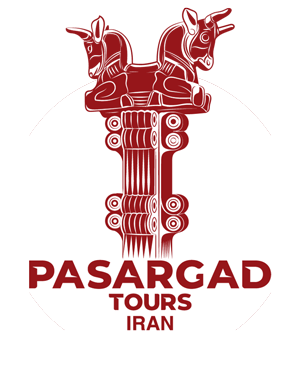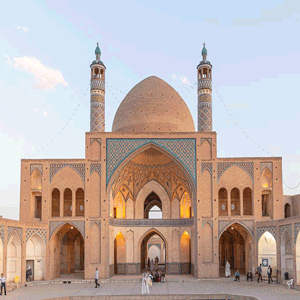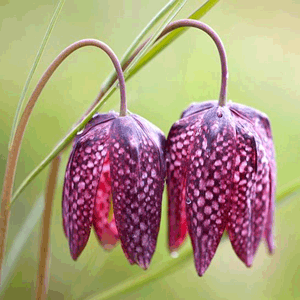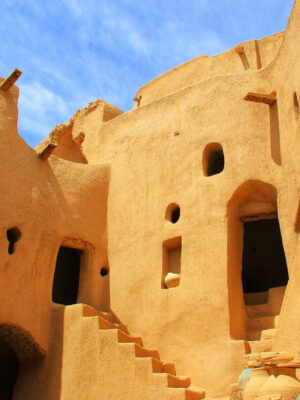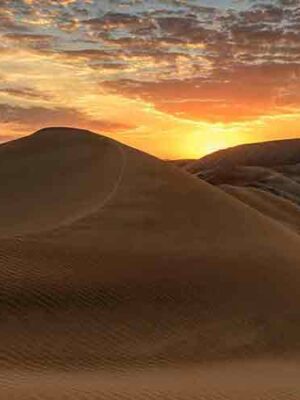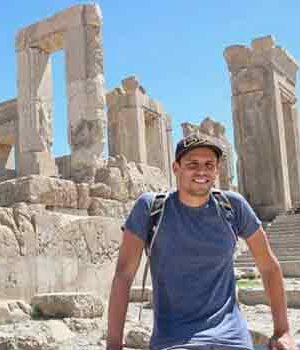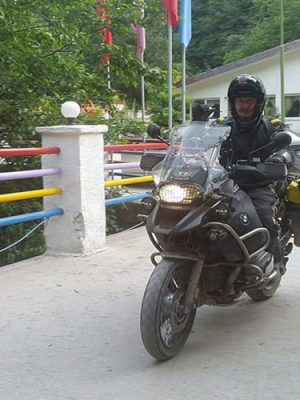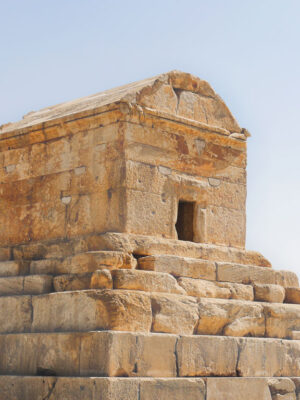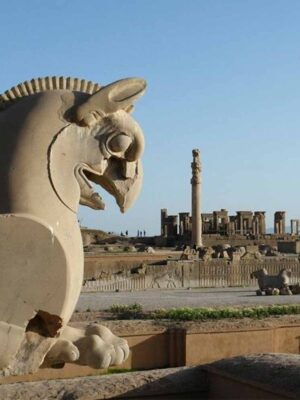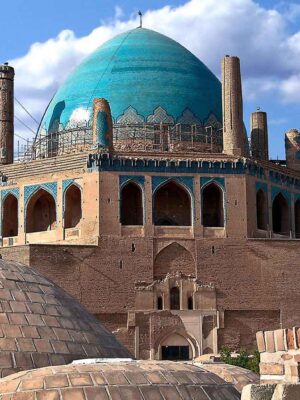Golestan Palace
If you are looking for the oldest historical monument in the capital, let us take you to the south of Tehran. Where a magnificent collection of Iranian art and architecture awaits visitors amidst the hustle and bustle of the Grand Bazaar! A place you must visit when traveling to Iran, Golestan Palace.
History of Golestan Palace
You may be wondering how old Golestan Palace is? The first citadel of Tehran was built during Safavid era (1501-1722), at that time, when Tehran was not yet chosen as the capital and Isfahan was the seat of Safavid kings. When the founder of Qajar dynasty, defeated the last king of Zand dynasty, and came to power, Tehran was chosen as his capital, and consequently, the importance of the citadel became much greater.

Beautiful Golestan palace in Tehran
Agha Mohammad Khan was crowned in 1796, ushering in the Qajar period officially. Since then Golestan palace became the residence of Qajar royal families.
Most of the changes in the Golestan complex occurred during the reign of Nasser-al-Din Shah, the fourth Qajar king. He was the first Iranian king who traveled to Europe and was greatly influenced by European art and architecture. Therefore, some parts of the palace were rebuilt in European style by his order.
During Pahlavi era, the last royal dynasty of Iran, Golestan palace was only host to important ceremonies such as the coronation of the first king of Pahlavi and his son. The Pahlavi family did not use the palace for residence and lived in Sa’dabad and Niavaran palaces.
A few years after the Islamic Revolution of Iran in 1979, this complex was turned into a museum and opened to the public.
In the year 2007, Golestan palace was added to the tangible heritage of UNESCO and now it is considered as one of the most important tourist attractions of Iran and it is 443 years old!
Join us to show you some parts of this amazing complex:
Marble throne
This magnificent throne was built by order of Fath-Ali Shah the second king of Qajar dynasty. Its designer was Mirza baba the painter and its mason was from Isfahan. This throne was made on a large scale to display the glory of the kingdom.
The idea for the design of this throne was taken from the throne of Solomon which was carried by demons and fairies.
The porch where the marble throne is placed was artistically and beautifully ornamented with paintings and mirror works.

Demons and fairies are holding the throne
Edifice of the Sun
This multi-storey building was one of the tallest in Tehran during the Qajar period. It was started by the order of Naser al-Din Shah and completed two years later. This building was the first building with a metal frame in Iran. The clock between its two towers was a gift from the Queen Victoria!
Salam Hall
This hall, which is also known as the museum hall, is the main part of Golestan palace, and is located in the north of the complex. During the reign of Nasser al-Din Shah, the construction of this museum was completed and all the objects of the old museum were moved here. All the items displayed in this hall are gifts of foreign leaders to the Iranian court.
There were two fantastic thrones called Naderi throne and Peacock throne in Golestan palace, which are now kept in the Jewelry museum, but their replicas have been displayed in the hall.
The coronation of Mohammad Reza, the last king of Iran, was held in this hall on the 26th of October 1967.

Mirror hall painting
Mirror Hall
The hall of mirrors in Golestan palace was built at the same time as Salam Hall. During the transfer of items from old museum to Salam Hall, Naderi throne and Peacock throne were kept in it for some time. Mirror hall was the meeting place of the king and ambassadors of foreign countries.
A great painting by Kamal Al-Molk, a famous Iranian painter, was painted in this hall. The king is sitting on a chair in the middle of the hall facing the Golestan garden through the window. All the details are skillfully depicted in this painting. To see this unique artwork, please visit Salam Hall.
Wind-catcher Mansion
This building is located on the south side of Golestan palace complex. It was used in summers due to its wind catchers and coolness.
Nasser al-Din Shah was assassinated in the 50th anniversary of his reign and the kingdom was handed over to his old and ailing son Mozafar al-Din Shah. After the death of his father, Mozafar al-Din Shah came to Tehran from Tabriz, the second capital of the Qajars, and was crowned in this mansion.

One of the beauties of this hall is its sash windows which fascinates every viewer!
White Palace
White Palace is located in the southern part of the complex and is named White because of its white façade. It is said that Naser Al-din Shah personally designed the palace in the style of the architecture of Louis XVI. Anyway, this palace was the workplace of the prime ministers during the Qajar period. After the Islamic Revolution, it changed to the Anthropology Museum.
Tiling of Golestan Palace
In addition to the beauty of the palaces and museums of the Golestan complex, something that will greatly impress you upon arrival is the stunning tiling of the walls.
During the Qajar period, due to the great interest of the Qajar kings and court artists in Western concepts and the growing connection with the Western world, the tendency towards Western art was provided in all fields as well as tiling. In the tiles of Golestan Palace complex, a kind of duality can be seen in the designs and themes; on one hand, there is a tendency towards traditional and original Iranian motifs, and on the other hand, there is a separation and distancing from it and a tendency towards Western artistic styles or a kind of modernity.

This style of tiling is called seven-color tiling. The production of this tiling requires less time and is lower in cost than mosaic tiling.
Do not forget to take photos for your profile on social media with these beautiful backgrounds!
Best time to visit Golestan Palace
The best time to visit Iran is March, April, September and October. During your trip to Iran with Pasargad tours, you will visit this unique complex. Our professional guides will tell you more about the history and art of Iran. Contact us!
Golestan Palace
If you are looking for the oldest historical monument in the capital, let us take you to the south of Tehran. Where a magnificent collection of Iranian art and architecture awaits visitors amidst the hustle and bustle of the Grand Bazaar! A place you must visit when traveling to Iran, Golestan Palace.
History of Golestan Palace
You may be wondering how old Golestan Palace is? The first citadel of Tehran was built during Safavid era (1501-1722), at that time, when Tehran was not yet chosen as the capital and Isfahan was the seat of Safavid kings. When the founder of Qajar dynasty, defeated the last king of Zand dynasty, and came to power, Tehran was chosen as his capital, and consequently, the importance of the citadel became much greater.

Beautiful Golestan palace in Tehran
Agha Mohammad Khan was crowned in 1796, ushering in the Qajar period officially. Since then Golestan palace became the residence of Qajar royal families.
Most of the changes in the Golestan complex occurred during the reign of Nasser-al-Din Shah, the fourth Qajar king. He was the first Iranian king who traveled to Europe and was greatly influenced by European art and architecture. Therefore, some parts of the palace were rebuilt in European style by his order.
During Pahlavi era, the last royal dynasty of Iran, Golestan palace was only host to important ceremonies such as the coronation of the first king of Pahlavi and his son. The Pahlavi family did not use the palace for residence and lived in Sa’dabad and Niavaran palaces.
A few years after the Islamic Revolution of Iran in 1979, this complex was turned into a museum and opened to the public.
In the year 2007, Golestan palace was added to the tangible heritage of UNESCO and now it is considered as one of the most important tourist attractions of Iran and it is 443 years old!
Join us to show you some parts of this amazing complex:
Marble throne
This magnificent throne was built by order of Fath-Ali Shah the second king of Qajar dynasty. Its designer was Mirza baba the painter and its mason was from Isfahan. This throne was made on a large scale to display the glory of the kingdom.
The idea for the design of this throne was taken from the throne of Solomon which was carried by demons and fairies.
The porch where the marble throne is placed was artistically and beautifully ornamented with paintings and mirror works.

Demons and fairies are holding the throne
Edifice of the Sun
This multi-storey building was one of the tallest in Tehran during the Qajar period. It was started by the order of Naser al-Din Shah and completed two years later. This building was the first building with a metal frame in Iran. The clock between its two towers was a gift from the Queen Victoria!
Salam Hall
This hall, which is also known as the museum hall, is the main part of Golestan palace, and is located in the north of the complex. During the reign of Nasser al-Din Shah, the construction of this museum was completed and all the objects of the old museum were moved here. All the items displayed in this hall are gifts of foreign leaders to the Iranian court.
There were two fantastic thrones called Naderi throne and Peacock throne in Golestan palace, which are now kept in the Jewelry museum, but their replicas have been displayed in the hall.
The coronation of Mohammad Reza, the last king of Iran, was held in this hall on the 26th of October 1967.

Mirror hall painting
Mirror Hall
The hall of mirrors in Golestan palace was built at the same time as Salam Hall. During the transfer of items from old museum to Salam Hall, Naderi throne and Peacock throne were kept in it for some time. Mirror hall was the meeting place of the king and ambassadors of foreign countries.
A great painting by Kamal Al-Molk, a famous Iranian painter, was painted in this hall. The king is sitting on a chair in the middle of the hall facing the Golestan garden through the window. All the details are skillfully depicted in this painting. To see this unique artwork, please visit Salam Hall.
Wind-catcher Mansion
This building is located on the south side of Golestan palace complex. It was used in summers due to its wind catchers and coolness.
Nasser al-Din Shah was assassinated in the 50th anniversary of his reign and the kingdom was handed over to his old and ailing son Mozafar al-Din Shah. After the death of his father, Mozafar al-Din Shah came to Tehran from Tabriz, the second capital of the Qajars, and was crowned in this mansion.

One of the beauties of this hall is its sash windows which fascinates every viewer!
White Palace
White Palace is located in the southern part of the complex and is named White because of its white façade. It is said that Naser Al-din Shah personally designed the palace in the style of the architecture of Louis XVI. Anyway, this palace was the workplace of the prime ministers during the Qajar period. After the Islamic Revolution, it changed to the Anthropology Museum.
Tiling of Golestan Palace
In addition to the beauty of the palaces and museums of the Golestan complex, something that will greatly impress you upon arrival is the stunning tiling of the walls.
During the Qajar period, due to the great interest of the Qajar kings and court artists in Western concepts and the growing connection with the Western world, the tendency towards Western art was provided in all fields as well as tiling. In the tiles of Golestan Palace complex, a kind of duality can be seen in the designs and themes; on one hand, there is a tendency towards traditional and original Iranian motifs, and on the other hand, there is a separation and distancing from it and a tendency towards Western artistic styles or a kind of modernity.

This style of tiling is called seven-color tiling. The production of this tiling requires less time and is lower in cost than mosaic tiling.
Do not forget to take photos for your profile on social media with these beautiful backgrounds!
Best time to visit Golestan Palace
The best time to visit Iran is March, April, September and October. During your trip to Iran with Pasargad tours, you will visit this unique complex. Our professional guides will tell you more about the history and art of Iran. Contact us!




